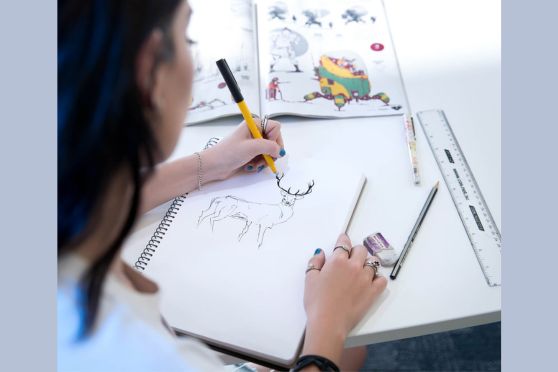What is Communication Design? What are the career prospects?


Communication design is a multidisciplinary field that blends art, technology, and strategic thinking to convey messages effectively. At its core, it focuses on the visual and textual elements that facilitate understanding between a sender and a receiver. This field encompasses various media, including print, digital, and environmental design, making it crucial in our increasingly interconnected world.
One of the primary goals of communication design is to enhance clarity and engagement. Designers employ typography, color theory, imagery, and layout to create materials that not only inform but also captivate the audience. Whether it’s a corporate branding project, an advertisement, a user interface for a website, or an educational poster, the design must resonate with its intended audience while aligning with the overall message.
In addition to aesthetics, communication design heavily relies on research and analysis. Designers must understand the target audience's needs, preferences, and cultural contexts to craft messages that are both relevant and impactful. This often involves iterative processes, where feedback is used to refine designs until the desired outcome is achieved.
Moreover, communication design plays a vital role in branding and identity. A well-designed logo or cohesive visual identity can evoke emotional connections and foster brand loyalty. In today’s digital landscape, where users are inundated with information, effective communication design helps brands stand out and communicate their values succinctly.
Ultimately, communication design is about problem-solving. It requires a combination of creativity, analytical skills, and an understanding of human behavior. By bridging gaps between ideas and their audiences, communication design empowers organizations to share their stories, engage communities, and inspire action. In a world where clear communication is paramount, the importance of this discipline cannot be overstated.
A career in communication design takes time and dedication. It's a field where passion, creativity, and continuous learning are keys to staying relevant and achieving your professional goals. With the right mindset and commitment to improvement, your career in communication design can be both fulfilling and prosperous.
Career prospects in communication design are diverse and expanding, reflecting the growing importance of effective visual communication in various industries. As organizations increasingly recognize the value of design in conveying messages and building brands, opportunities continue to arise across multiple sectors.
One of the most common roles in this field is that of a graphic designer. Graphic designers create visual content for print and digital media, including advertisements, brochures, websites, and social media graphics. With the rise of digital platforms, demand for skilled designers who can produce engaging online content has surged, leading to opportunities in freelance work, agencies, and in-house teams.
User experience (UX) and user interface (UI) design have also become prominent areas within communication design. UX/UI designers focus on creating intuitive and visually appealing interfaces for websites and applications, ensuring that user interactions are seamless and enjoyable. With the continuous growth of technology and the need for user-centered design, professionals in this field are highly sought after.
Branding specialists are another vital segment of communication design careers. These designers work on developing and maintaining brand identities, ensuring that visual elements resonate with target audiences and effectively communicate brand values. This role often involves collaboration with marketing teams and requires a deep understanding of consumer psychology.
In addition, roles in motion graphics and animation are gaining traction. As video content becomes increasingly important for engagement, skills in creating animated graphics and videos are highly valuable.
Moreover, communication design can lead to leadership roles such as creative director or design manager, where experienced professionals guide teams and shape overall design strategies. Educational pathways in communication design are versatile, with options ranging from formal degrees in graphic design or visual communication to boot camps and online courses focusing on specific skills. Networking and building a strong portfolio are essential for career advancement in this competitive field.
Overall, the career prospects in communication design are promising, offering creative individuals the chance to make significant impacts across various industries while adapting to evolving technologies and trends.
These additional tips will help you navigate your path and make the most of your career.
1. Develop Strong Design Skills:
First and foremost, invest time in honing your design skills. Understand the principles of design, typography, composition, behaviour sciences etc. Practice regularly and stay updated with design trends.
2. Create a Strong Portfolio:
Your portfolio is your calling card. Showcase your best work to potential employers or clients. It should demonstrate a range of projects and highlight your skills and creativity.
3. Stay Adaptable:
The design industry changes rapidly. Stay adaptable and open to new technologies and tools. Embrace change as an opportunity for growth. Liberal approach in learning helps the development of critical thinking, adaptability, and an open-mindedness in addition to the technical abilities necessary for design.
4. Master Design Softwares:
Proficiency in design software is essential. Learn the industry-standard tools relevant to your field.
5. Stay Organised:
Good project management and organizational skills are crucial, especially if you work on multiple projects. Tools like project management software can help you stay on top of deadlines.
About the Author: Dr Anand James, Dean, School of Design, Vijaybhoomi University, Karjat- Mumbai